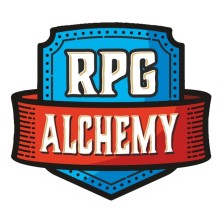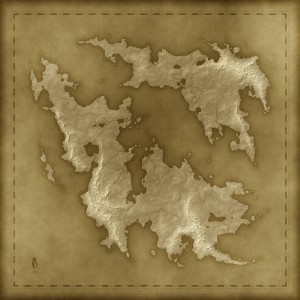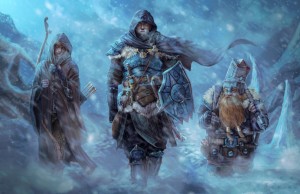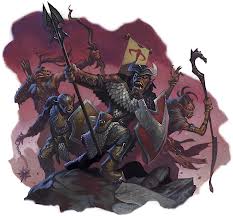Phase Two: Campaign Look & Feel
Last time we discussed starting a new campaign by creating a comprehensive list of potential campaign elements for development. In this installment we’re going to use those elements to begin shaping the campaign’s look and feel.
At this stage of the campaign creation process I’m taking the various campaign elements the players and I came up with and placing them in context with each other. Ultimately this phase of campaign design will begin laying out the setting itself. There are four areas I focus on when shaping my campaign elements into a setting; Scope, Environment, Motif, and Theme. Each of these plays an important role in both setting design and how the campaign’s adventures will be presented.
Scope
My time is limited so I don’t like to waste any with unnecessary work, so this is one of the first things I like to focus on, the size and scope of the setting. There are a lot of options here. I’ve run campaigns set anywhere from a single valley to a handful of neighboring kingdoms and all the way up to a continent size empire. Knowing how large of an area I plan to work with informs many of my design principles. A smaller setting often requires more specific detail then a larger one. However a larger setting usually requires more broad information regarding the differences between regions.
A few years back I ran a Dungeons & Dragons campaign set in a place I called the Seven Bridges Valley. The entire campaign played out in an area less than 100 miles by��60 miles. The small scope of the campaign required me to focus on details and specifics of the valley but I really didn’t need to know too much about things beyond its borders. When I began putting things together for the campaign I made a check list for development that looked something like this:
- How many settlements are in the valley?
- Who are the important NPC’s in each of the communities?
- How is the valley governed?
- What are the relevant historical events��for the region?
- Where is the valley located in relation to the rest of the world?
Knowing that I wanted the campaign to remain focused on the valley not only helped me answer these questions but also how to answer these questions. The important NPC’s and how the villages were governed required a lot more effort and detail because these were elements the heroes would interact with time and time again. I created an extensive list of names and relationships as well as political agendas, motivations, and powers that be. On the other hand the valley’s relationship with the rest of the world was summed up in a couple of sentences about being along a remote and rarely used northern trade route between a declining empire and a handful of scattered fiefdoms. Nothing else was really necessary.
Environment
One of the early elements I like to consider in the design process is the environment. Whether or not the setting’s environment directly impacts the campaign or is merely “window dressing” impacts several important factors. If survival is an element I want to feature in a campaign then I’ll probably feature at least one area with extreme conditions. Deserts, swamps, and arctic areas can all be used to challenge the heroes and showcase the struggle of man vs. nature. If my��focus lies elsewhere then a temperate climate may be fine. Even when I decide not to focus on environment I still tend to have at least one or two local areas that can be featured on occasion, such as a small bog or a single rocky canyon.
When designing Seven Bridges Valley I determined that in general the environment wasn’t really a factor, the valley was on the cool side of temperate and for the most part covered in low hills and deciduous forests. Water was plentiful and crops grew easily. The mountains surrounding the valley were snow-capped most of the year and occasionally saw severe storms. These elements also helped support the scope of the setting; the frequently snowed in passes contributed to the region’s isolation while the fertile valley allowed the locals to be self-sufficient.
Motif��
Most of the time my choice of game dictates the campaign’s motif. Star Wars is generally pulp action space opera while Dragon Age tends toward dark fantasy. Even if a game assumes a core style I like to take a minute to determine if that’s the way I want to run it. A game like Dungeons & Dragons defaults to high fantasy but it doesn’t take too much effort to run a sword and sorcery, gothic horror, or steampunk campaign with the rules. I look to the various elements I want to feature in the campaign to help determine what style of campaign I want to run. If mystery and the unknown arte going to feature predominately than I might lean toward horror but post-apocalyptic might serve my survival game better.��For the Seven Bridges Valley I knew I wanted a high fantasy concept so I used most of the default assumption of Dungeons & Dragons for my motif.
Theme
Although not strictly necessary I like to feature one or two reoccurring themes in my campaigns. Something like the��hero’s journey��or the past repeating itself��can really tie the various elements of a campaign together in a unique and satisfying way. You don’t have to be to lofty or esoteric with your themes either. Something as simple as power corrupting can be played out across many areas of your campaign without a great deal of work. There are numerous themes that you could incorporate, including:
- Good vs. Evil
- The sins of the father
- Self vs. community
- Right vs. wrong
- The power of nature
For the Seven Bridges Valley I wanted to to capture the theme of “community”. I incorporated��this theme in several areas. First the heroes were all members of the Assembly of Advisors, dedicated defenders of the valley. Secondly the primary antagonists were the Dragon’s Eye, a warhost of hobgoblins attempting to reclaim their ancestral home (the valley). I also featured problems and events that impacted all five of the settlements of the valley and showcased positive things happening when people worked together to solve their problems. In a similar manner I created��several villans that were “lone-wolves” and suffered from their actions in an effort to demonstrate the opposite side of the theme.��You don’t have to use your theme for every possible aspect of the campaign just take some time to think about how and if any of your adventures, events, or NPC’s might embody the theme.
Final Thoughts
After this phase of the design process is complete I’m ready to really dive into the heart and soul of the campaign. For the next couple of steps I work with the players to shape and mold the focus of the campaign and how the heroes will interface with it. Next time we’ll take a look at one of the most important aspects of connecting the PC’s with the setting, the Party Concept.
Links to the RPG Alchemy’s entire Campaign Design series:



